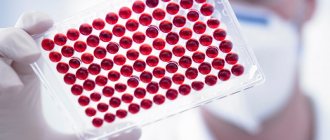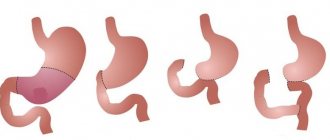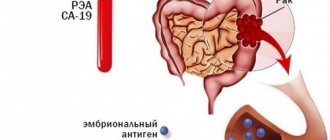At the beginning of diagnosing cancer, the level of leukocytes and hemoglobin in the blood is determined. The fact is that its cellular composition is overly sensitive to any changes that occur in the body, and the slightest deviations can signal a deterioration or improvement of the condition. Anemia is a pathological condition of the circulatory system in which the number of red blood cells decreases. Hemoglobin also drops, and eventually anemia develops. A person with such a violation of internal processes quickly develops fatigue, frequent dizziness, and possible fainting. However, anemia is not an independent disease: as a rule, it becomes a symptom of a serious illness. Often, a decrease in the level of hemoglobin in the blood becomes one of the complications in the development of cancer.
Choose treatment
Why are Hgb indicators needed?
Hemoglobin is a protein found in red blood cells (also called red blood cells). Its important task is to saturate the body’s tissues with oxygen and also remove carbon dioxide from them. A drop in hemoglobin levels leads to hypoxia, and a person begins to experience oxygen starvation. One of the most serious reasons for the lack of this protein in the blood is the development of cancer. However, anemia often appears in patients undergoing chemotherapy. In this case, doctors begin to adjust the dosage and select drugs that increase the level of red blood cells. It is depending on the type of hemoglobin in cancer that further treatment will be determined.
The first signs of bowel cancer
It is advisable to identify the first signs of intestinal cancer using instrumental methods of visual examination of the walls of the large intestine, by probing or by radiation methods, without penetrating into the body.
The basis for prescribing instrumental or laboratory tests are:
- at-risk groups;
- age over 40 years, but there are cases of the disease at a younger age;
- the presence of some signs indicating damage to the gastrointestinal tract against the background of any other symptoms, for example, a combination of disorders of the heart and excretory functions against the background of intestinal dysfunction.
A very important role during this period is played by the competent oncological alertness of the general practitioner, because in 70-90% of cases people turn to the general practitioner in the early stages of the disease, often for reasons that have no apparent relation to cancer.
The doctor usually thinks about the possible layering of oncology when the following subjective sensations appear or intensify in the patient (at least three at a time), including:
- general weakness;
- fast fatiguability;
- pain in a certain anatomical area of the abdomen (see intestinal anatomy above);
- progressive weight loss;
- slight but persistent increase in body temperature;
- blood or mucus in stool;
- dark (black) stool;
- pallor of the mucous membranes and skin;
- lack of relief after effective therapeutic procedures.
Naturally, these signs are not an accurate indication of cancer; one should always take into account the patient’s suspiciousness, individual pain sensitivity threshold, and other clinically important parameters for diagnosis. When the doctor confirms the patient’s complaints, the diagnosis is clarified on the basis of clinical, instrumental and laboratory studies.
It is inappropriate to list the primary macro- and microscopic changes in the intestinal walls that diagnosticians detect during examinations in this article, since such knowledge is purely professional.
Causes of decreased red blood cell levels
Red blood cell deficiency can be caused by a variety of factors.
Lack of iron.
It is this component that helps the body produce the proper amount of hemoglobin. It also participates in the process of oxygen redistribution in tissues and helps get rid of excess carbon dioxide.
Bleeding.
They can begin due to the breakdown of a tumor or tissue damage. Most often, this becomes a symptom of cancer of the stomach or female reproductive system, and bleeding begins already in advanced stages. As a result, the body loses hemoglobin along with the blood and cannot replenish it.
Hemolysis.
Red blood cells begin to be destroyed under the influence of toxic substances released by the cancerous tumor.
Bone marrow damage.
This is the main hematopoietic organ. If cancer develops in the bone marrow, anemia, as a rule, appears at the 2nd stage of the disease.
Enlarged spleen.
When damaged, this organ ceases to perform its main function - sorting blood cells. As a result, red blood cells begin to be destroyed, which leads to anemia.
Most often, anemia develops with cancer of the lungs, kidneys, female reproductive system, bladder, lymphomas and myeloma. Often, a drop in hemoglobin levels leads to the fact that patients begin to need blood transfusions.
Blood test for tumor markers
A more informative blood test for cancer in the intestines is a tumor marker test. Oncological markers are proteins that are a product of the vital activity of malignant cells. Such antigens will be different for each organ; in general, their identification indicates the presence of a malignant neoplasm. There are cases when an increase in the level of antigens is detected during the inflammatory process in the intestines.
A blood test for tumor markers allows you to:
- establish the nature of the tumor (benign or malignant);
- identify the stage of development of the disease, determine the size of the tumor;
- determine how the body reacts to cancer;
- monitor the effectiveness of therapy.
If malignant intestinal tumors are suspected, attention is paid to 2 tumor markers: CEA and CA-19-9 antigen. The first of them (carcinoembryonic antigen) can signal not only intestinal cancer, but indicate oncological damage to other organs: lungs, liver, breast, prostate, lungs, cervix, etc.
With a malignant tumor, the CEA indicator increases, at the beginning of the disease it grows more actively, then gradually. Even in healthy people, CEA may be slightly higher than normal if the person has cirrhosis of the liver or smokes.
Antigen CA-19-9 can be detected, indicating cancer of the intestines, stomach and pancreas. This tumor marker increases during inflammation in the stomach, liver, benign tumors and cystic fibrosis.
Additional examinations will help to finally confirm or, fortunately, refute the diagnosis. If the levels of both tumor markers listed above are constantly increasing, this indicates that the tumor in the intestine is progressing. If the tumor markers in the blood test results decrease, we can talk about a positive response to treatment.
The importance of tumor markers in diagnosing cancer should not be overestimated, since medicine knows cases where the results are elevated, but no malignant processes are observed in the patient. Therefore, analysis for tumor markers is better considered an important additional diagnostic method, which is used in combination with other methods.
Hemoglobin in cancer
Hemoglobin is a specific protein that is present in red blood cells. What should the indicator be for cancer? Most often it falls below normal. Normal amount of hemoglobin:
- 130–174 for men,
- 110–155 for women.
If the indicator deviates in any direction by several units, this will not affect the general well-being of the patient. But if there is a malignant tumor in the body, anemia or a severe infection develops, then the hemoglobin level usually decreases. In case of cancer, this can happen for various reasons. Experts must identify the factor that provokes a decrease in protein concentration.
In medical practice, there have also been cases where a high hemoglobin level was noted in cancer. This is mainly observed in liver or kidney cancer. In any case, an increase in protein concentration is no less important than a decrease.
Choose treatment
Ultrasound screening
Screening is a preventive examination of an organ using ultrasound. The procedure is usually carried out for indirect indications, which include:
- rectal cancer in relatives;
- old age, which plays a role in individuals prone to tumor formation.
In these cases, it is recommended to undergo endorectal ultrasound of the intestine for better visualization of neoplasms.
This will allow you to more correctly plan further treatment. The purpose of a preventive study is to exclude a malignant intestinal process.
A timely examination of the intestines once a year will make it possible to assess the risks of developing oncology and notice negative tissue changes in time.
Symptoms of anemia
What are the most common symptoms of decreased red blood cell levels in cancer? It all depends on the gender, age, weight of the patient, as well as the stage of his disease. So, for a young man of average build at stages 1–2 of cancer, anemia will not show any special symptoms. But for weakened people, especially for elderly patients with chronic diseases, the consequences of a lack of hemoglobin will manifest themselves quite acutely:
- regular dizziness and headaches will begin;
- paleness of the skin will appear;
- fatigue and drowsiness will develop;
- there will be pain in the chest, the heart rate will increase;
- Swelling of the arms and legs can lead to the development of cramps.
The more severe the anemia, the weaker the person becomes. With a serious lack of hemoglobin, simple activities such as walking and even long conversations become impossible.
Diagnostics
It is very easy to detect a lack of red cells; for this, a general blood test is taken (usually from a vein). But discovering the causes of this condition can be difficult, especially in a cancer patient. In this case, doctors may order additional biochemical tests to determine levels of other substances. A stool test for occult blood will also be performed. Additionally, a bone marrow examination, ultrasound and MRI may be prescribed to detect metastasis of tumors to other tissues of the body.
Hemoglobin and cancer treatment
The number of red blood cells is directly related to successful healing from the disease. A drop in hemoglobin levels not only worsens the patient’s general condition, but also slows down the healing process:
- Tissues receive less oxygen. This applies not only to healthy organs, but also to tumor sites. This means that chemotherapy drugs do not work enough on them.
- Immunity decreases, and the body is less able to resist the development of pathology.
- Anemia requires banning certain medications or reducing the dosage of chemicals.
A 2002 study on the role of low hemoglobin in advanced breast cancer found that tumor-fighting drugs were effective in 78.6% of patients with normal red blood cell levels. But in women with severe anemia, this figure fell, the effectiveness was 56.6%.
Causes of bowel cancer
Colorectal cancer is common among people with a predominant diet of animal proteins and fats, leading a sedentary lifestyle - these are residents of Europe and North America (regardless of race).
In African countries, with a diet of predominantly plant proteins and carbohydrates with a high content of plant fiber in food, as well as a high level of physical labor, the incidence rate is 10-20 times lower than in developed countries. But Africans living in Europe or America for a long time make up a significant group of patients with colon cancer.
This gives reason to believe that it is the excess of meat in the diet against the background of a deficiency of plant fiber necessary for peristalsis and bowel movements during bowel movements, and a sedentary lifestyle that are the main causes of colorectal cancer. The theory of racial resistance to cancer is untenable.
The three most likely pathways leading to intestinal cancer (although the true causes of the occurrence and development of carcinogenesis are not fully known):
I. group of reasons
In some cases, precancerous stages occur without clinical manifestations in the form of dysplasia (changes at the cellular level). A person feels completely healthy for a long time; periodic disorders are mistaken for minor disorders that can be eliminated with minimal effort. Cancer in this case is a surprise for both the patient and the doctor.
II. group of reasons
Another part of precancerous conditions is disguised as chronic pathologies. There is certainly a proven fatal link between some diseases of the gastrointestinal tract and colorectal cancer.
Here are some of the most significant diseases that are most likely to precede cancer:
- Polyposis of the large intestine (the probability of malignant degeneration (malignancy) is up to 100%), sometimes associated with genetic disorders in close relatives. Not all are precursors to cancer; the most dangerous polyposis are:
diffuse familial, has the following clinical signs - frequent bowel movements, more than five times a day, bloody stools, pain or discomfort in the abdomen of varying intensity;
- villous, has the following signs - copious mucus discharge during bowel movements (up to 1.5 liters per day), other symptoms (see diffuse polyposis);
- Turcot syndrome is a rare hereditary disease that combines a brain tumor and colon polyposis, see the symptoms of polyposis above;
- Peutz-Jeghers-Touraine syndrome is a combination of pigment spots on the face and polyps in the large intestine in relatives.
- nonspecific ulcerative colitis - diarrhea, frequency of bowel movements up to 20 times a day, blood or pus in the stool caused by ulcers on the intestinal walls, pain in the lower abdomen, bloating of intestinal loops (protrusion of the lower abdomen);
- diabetes mellitus type 2 (non-insulin dependent) – increased thirst, large volume of urine with normal frequency of urination, itching, dry skin, obesity, weakness, prolonged healing of skin and muscle damage.
III. group of reasons
Diseases that do not precede cancer, but often overlap with this disease and confuse the clinical picture.
This is relevant if the doctor supervises the patient for a long time, for example, regarding:
- hemorrhoids;
- diverticula (pockets in the intestinal walls);
- chronic intestinal obstruction;
- anal fissures or fistulas;
- other diseases of the lower gastrointestinal tract.
Each disease has its own typical clinical picture with the same or common symptom for all listed diseases - difficult, painful defecation.
Hemoglobin and cancer
Some believe that anemia can cause the development of cancer. However, here everything is different: anemia is a symptom of cancer, its consequence. It can be caused by the disease itself, chemotherapy drugs, or the development of concomitant diseases. However, anemia itself is not capable of affecting the formation of a tumor in the human body. Low hemoglobin most often occurs with cancer of the stomach, intestines, and uterus (due to bleeding). Anemia also occurs in patients with leukemia. If the cause of this symptom is the side effects of chemotherapy drugs, doctors will have to adjust the dose or replace the drugs with gentler versions. In addition, medications with a high iron content can be prescribed: this will quickly restore the required hemoglobin level.
Stages of rectal cancer
Previously, the stages of cancer were determined by the size of the tumor, but it turned out that the depth of penetration of cancer cells into the organ wall and metastases in nearby lymph nodes are much more important for the prognosis, and therefore the choice of optimal treatment. If the tumor does not involve the lymph nodes in the process, then this is early stage I and II cancer.
- In stage I, the tumor is limited to the rectal mucosa.
- Its germination through the entire intestinal wall, but without leaving the organ, transfers the process to stage II.
- Metastases in the lymph nodes near the intestine, regardless of the size of the primary tumor, change the stage to III.
- And stage IV is diagnosed only with metastases in other organs, most often the liver and lungs.
A very important prognostic sign is the degree of malignancy of the neoplasm, which is determined by cell maturity. The more primitive a cell is, the more aggressively it multiplies; cancer from the most primitive cells is called undifferentiated, and it quickly metastasizes. Highly differentiated neoplasms have the lowest malignancy and the best prognosis. Accordingly, moderately differentiated cancer has an average degree of aggressiveness.











